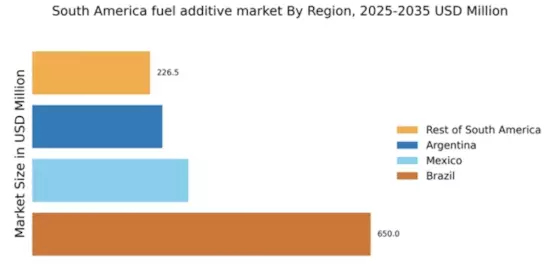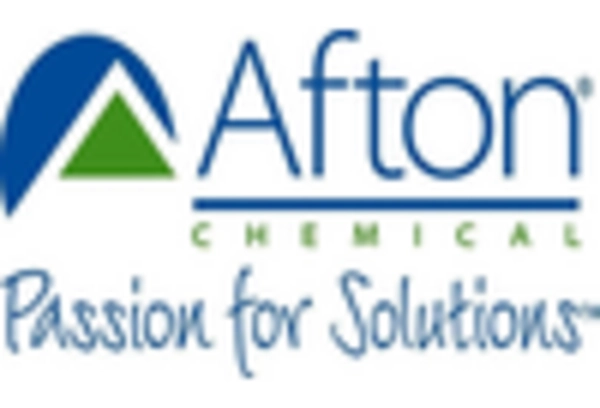Rising Fuel Prices
The escalating fuel prices in South America are driving the fuel additive market. As consumers and businesses seek to optimize fuel efficiency, the demand for additives that enhance performance and reduce consumption is increasing. In 2025, the average price of gasoline in Brazil reached approximately $1.20 per liter, prompting consumers to explore solutions that can mitigate costs. Fuel additives are perceived as a viable option to improve engine performance and reduce fuel consumption, thereby addressing the financial burden of rising fuel prices. This trend is likely to continue as economic pressures persist, leading to a sustained interest in the fuel additive market.
Environmental Regulations
Stringent environmental regulations across South America are influencing the fuel additive market. Governments are increasingly implementing policies aimed at reducing emissions and promoting cleaner fuels. For instance, Brazil's National Policy on Climate Change aims to reduce greenhouse gas emissions by 37% by 2025. This regulatory landscape encourages the adoption of fuel additives that comply with environmental standards, thereby enhancing the market's growth. The fuel additive market is likely to benefit from innovations that align with these regulations, as manufacturers develop products that not only meet compliance but also appeal to environmentally conscious consumers.
Increased Vehicle Ownership
The surge in vehicle ownership in South America is a significant driver for the fuel additive market. As more individuals acquire vehicles, the demand for fuel and related products, including additives, is expected to rise. In 2025, Brazil reported a vehicle ownership rate of approximately 300 vehicles per 1,000 inhabitants, indicating a robust automotive market. This increase in vehicle numbers correlates with a heightened need for fuel additives that enhance engine performance and longevity. Consequently, the fuel additive market is poised for growth as consumers seek to maintain their vehicles' efficiency and performance.
Consumer Awareness and Education
Growing consumer awareness regarding the benefits of fuel additives is driving market growth in South America. As individuals become more informed about the advantages of using additives, such as improved fuel economy and reduced emissions, the demand for these products is likely to increase. Educational campaigns by manufacturers and industry associations are playing a crucial role in disseminating information about the efficacy of fuel additives. This heightened awareness is expected to bolster the fuel additive market, as consumers actively seek products that enhance their vehicles' performance and align with their environmental values.
Technological Innovations in Additives
Technological advancements in fuel additives are reshaping the market landscape in South America. Innovations such as advanced detergents and friction modifiers are being developed to improve fuel efficiency and engine cleanliness. The introduction of bio-based additives is also gaining traction, appealing to environmentally conscious consumers. As manufacturers invest in research and development, the fuel additive market is likely to witness a wave of new products that offer enhanced performance and sustainability. This trend suggests a competitive environment where companies strive to differentiate their offerings through technological superiority.


















Leave a Comment